Yesterday was January 6, and that day (also known as Ephiphany) marks the official end of the Christmas season and the day where all Christmas decorations should be taken down or left up all year to prevent bad omens. I celebrated the end to the season by going to Bankside to watch "the Lions part" perform their 25th traditional Twelfth Night traditional events and celebrations (I've previously been to their Apple Day at Borough Market 'October Plenty'). These traditions included the Green Man (Holly Man) arriving across the river Thames, Wassailing through Bankside, a Mummer's Play, traditional dancing, and the crowning of the King Bean and Queen Pea. I will explain more in detail about these different traditions below. (Last year, I celebrated Twelfth Night at the Geffrye Museum, but the museum is currently closed for a couple of years due to renovations.)

'Ephiphany' comes from a Greek word that means "manifestation", and in Christain religion, this was written as the day when the wise men arrived to see the baby Jesus and presented him with gifts. Further back in time, this time of the year was celebrated as the Winter Solstice when the days start to get lighter earlier again. The Romans called it "Saturnalia", and they spent the time feasting, exchanging gifts, playing games, and swapping social status. They also decorated the buildings with greenery to welcome the promise of spring and warmer months. The bonfire was important to keep a Yule log alight through the dark winter months. A "Lord of Misrule" was appointed on Twelfth Night to conduct the merry-making. These traditions continued throughout the past years with some evolving into indoor Christmas trees, pine branches, and mistletoe and chocolate Yule logs.
The Twelfth Night was the final day of celebrations before people had to return to work in medieval England. What happened on the night was the "topsy turvy" gender and social status reversals, which was one of the traditions carried over from the Roman Saturnalia. Master and slave would have had rules reversed, but in medieval England, the person who found a pea or a bean would be queen or king for the day. The Twelfth Night also meant playing games, drinking, and feasting.

The celebrations of Twelfth Night started on Bankside about ten minutes prior to the main event with entertainers dressed as drinking pirates firing up the crowd.
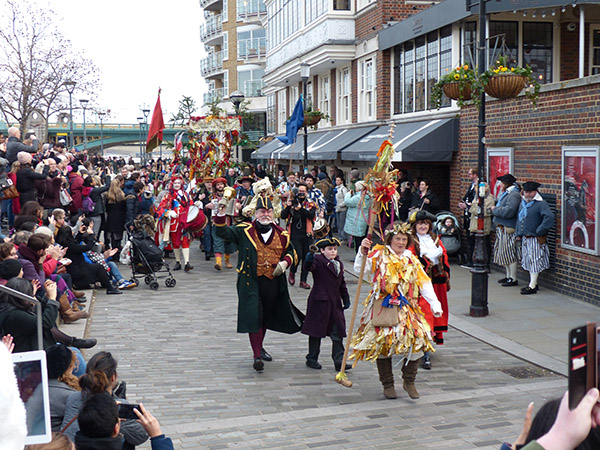
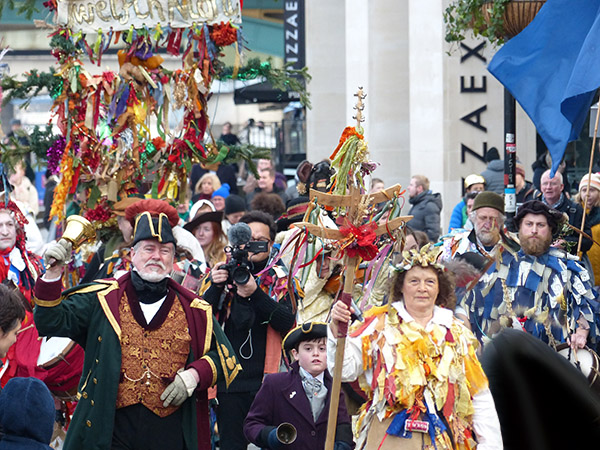
When the time came, part of the group paraded through the street of Bankside to arrive at the crowd. These included the bell-ringers and a symbol of the apple tree. They announced the arrival of the Green Man, known as the Holly Man in winter form. The Green Man is meant to arrive by boat on the Thames, but they have not been permitted to arrive by the river for health and safety reasons for the past couple of years.
The Green Man conducted the Wassails. The first one was for the boat, and the second wassail was for the symbolic apple tree present and being carried.
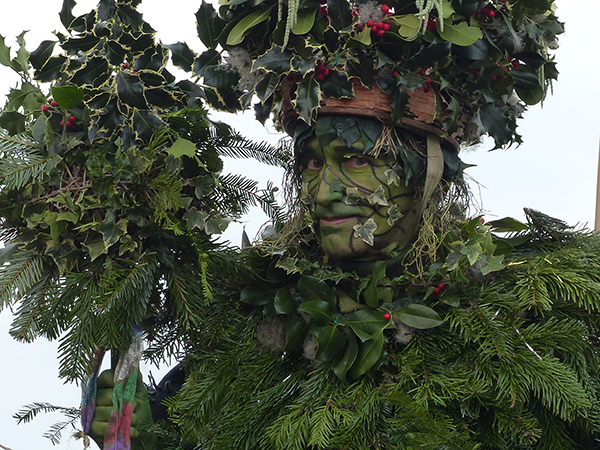
The tradition of wassailing is a rural one. Wassail is a drink of mulled apple cider or ale, and on the Twelfth Night, a group of people would gather together. They would be led by the king and queen of the wassailing party and sing and put drink amongst the apple trees to promote good health and to keep away the evil spirits. If successful, this would produce good harvests. The wassailing can also be done in the town from house-to-house where people would sing and drink the mulled drink. Today, the tradition of caroling replaces wassailing.
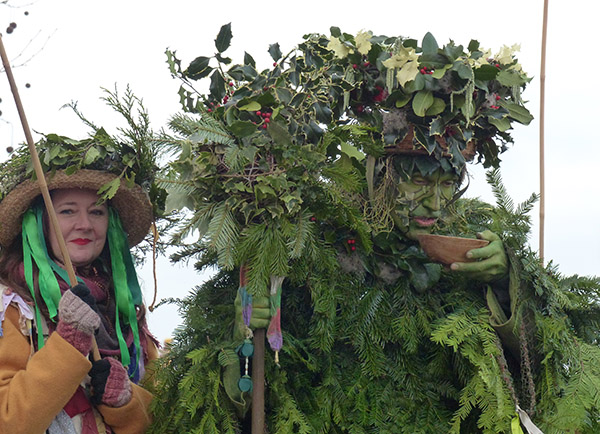
The Green Man drank the drink from a wooden bowl, as per tradition, during the Wassail.
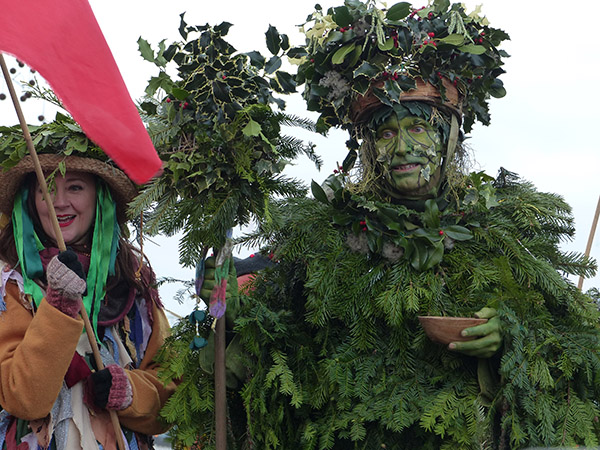
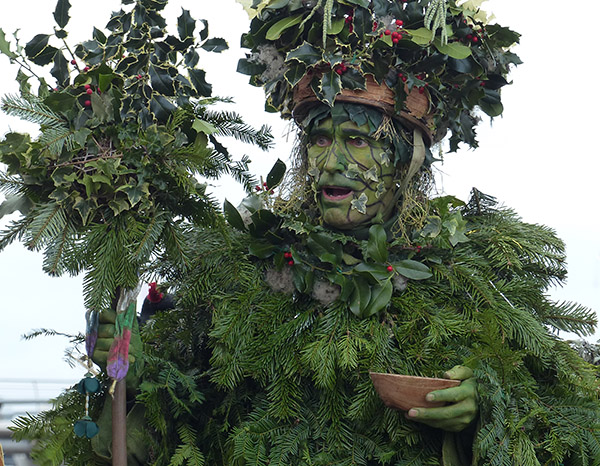
The Green Man is a symbol that pre-dates Christianity and has been adopted by Christianity possibly in earlier days to promote pagan conversions to Christainity. He is almost always depicted as male and can be found in cathedrals. He is depicted with vines and branches making up his head or coming from his head. "The Green Man" is also a popular name for English pubs. He has become a motif, and his symbol essentially means "rebirth".
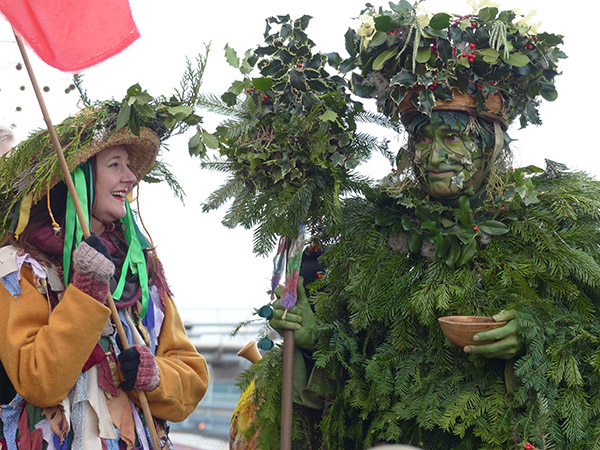
After the Green Man performed the boat and apple tree wassails, the event continued to the front of the Globe theatre.
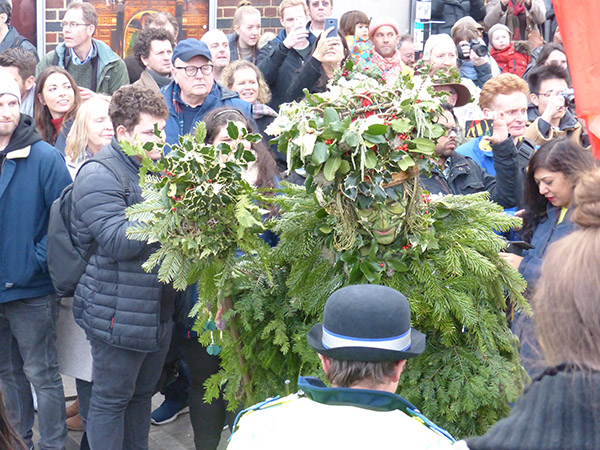
We met the mayor of Southwark, who attended the special Twelfth Night event.
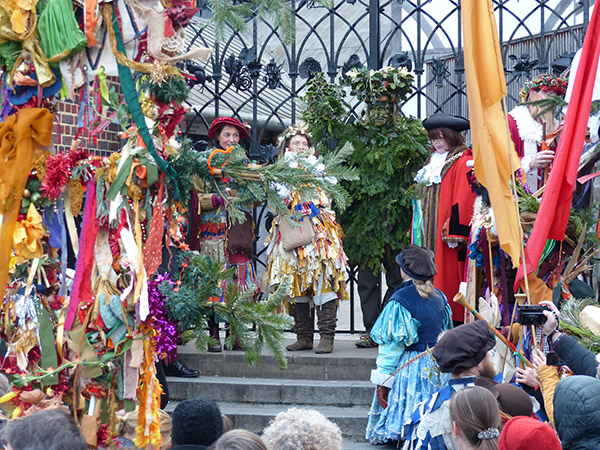
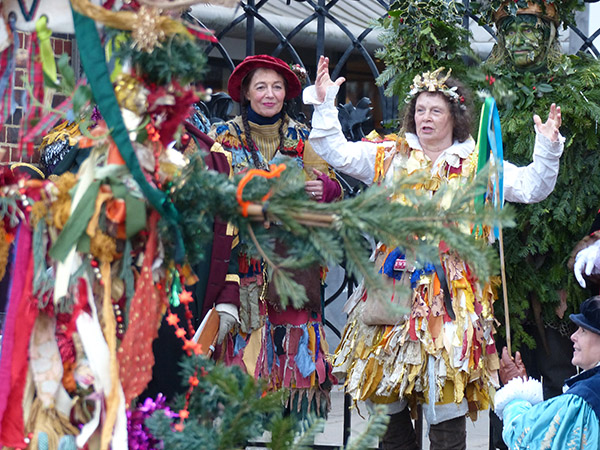
The Globe Wassail was then recited.
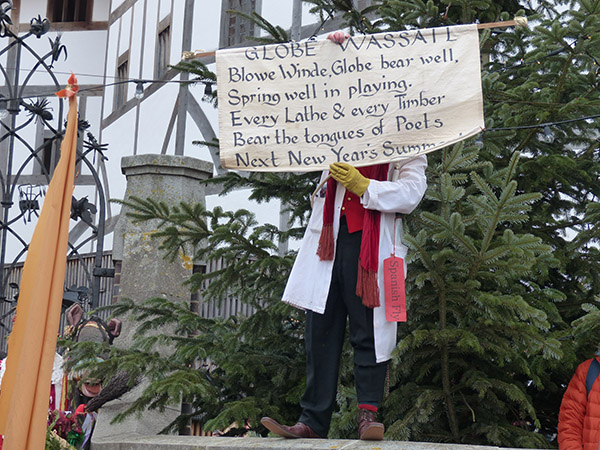
After this wassail, the event continued with the Mummer's Play. What is a Mummer's Play? A Mummer's Play is a traditional play, and it essentially involves two characters who participate in a sword dance and sword combat; the loser of this combat is then revived by a doctor character. These plays are usually held on special days, such as Halloween, Bonfire Night, Shrove Tuesday, and Twelfth Night.
The primary characters are King George and the main opponent (sometimes called the Turkish Knight as a country of conflict to the nation), a doctor, Father Christmas, and Beelzebub (devil). The mummers would paint their faces and wear their coats inside out, adorning it with colourful rags.

Mumming was the most popular in the late 19th and early 20th century. It slowed down after the Great War. There are slight variations of the story based on the time of the year.
The Mummer's Play started off with singing and dancing. I was lucky to have a space in the front to watch considering that each aspect of the event required moving and walking around to a different area on Bankside, so it did not matter how early you visited but you needed to be in the right place at the right time.
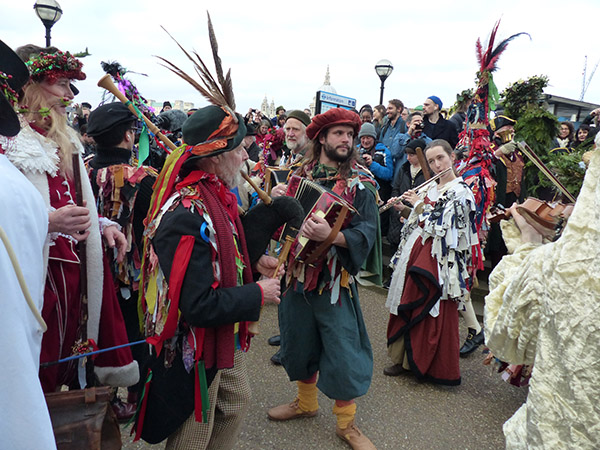
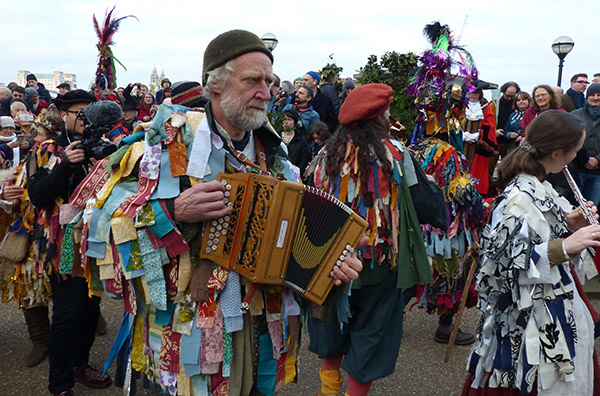
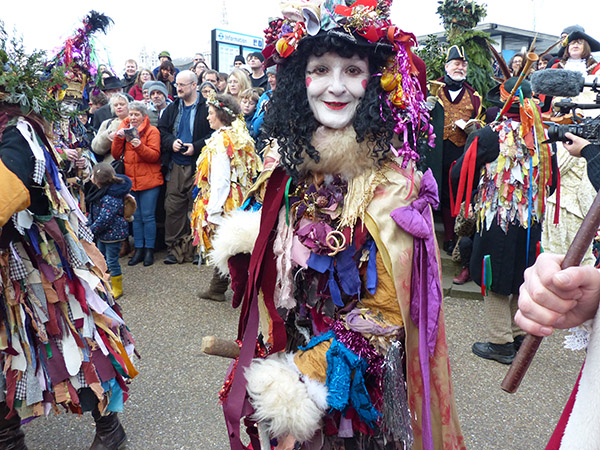
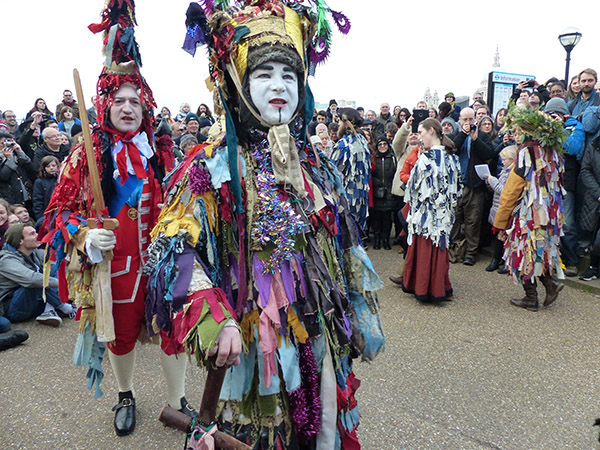
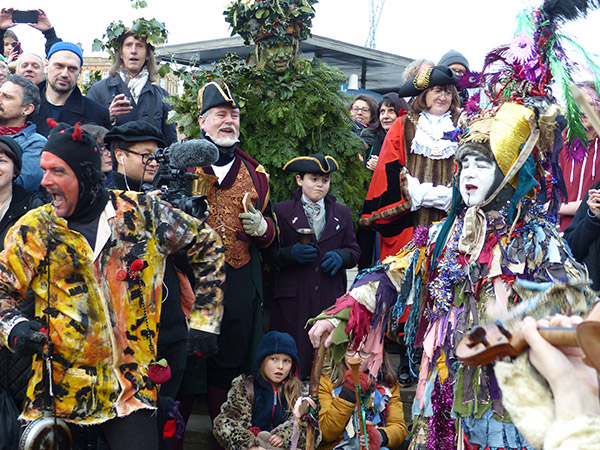

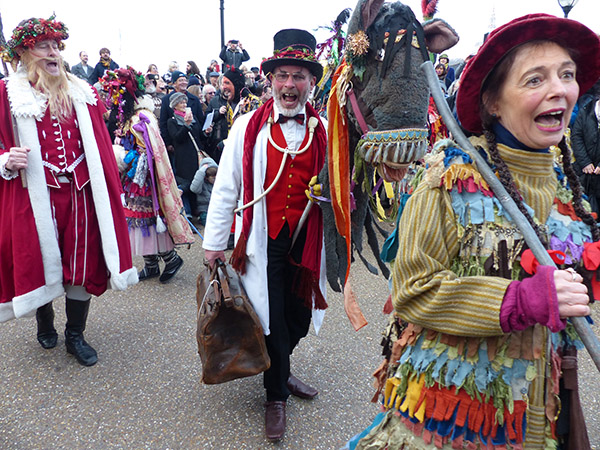

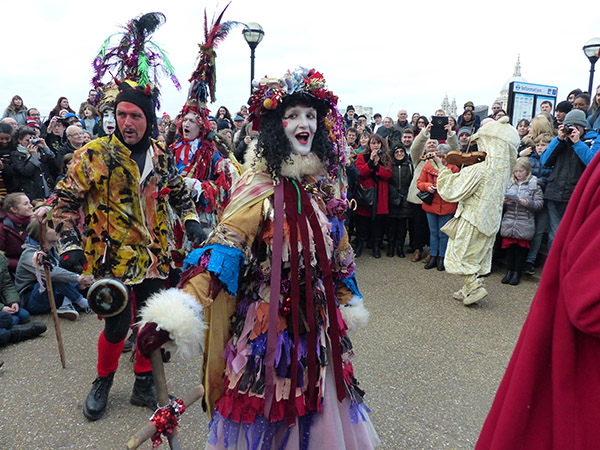

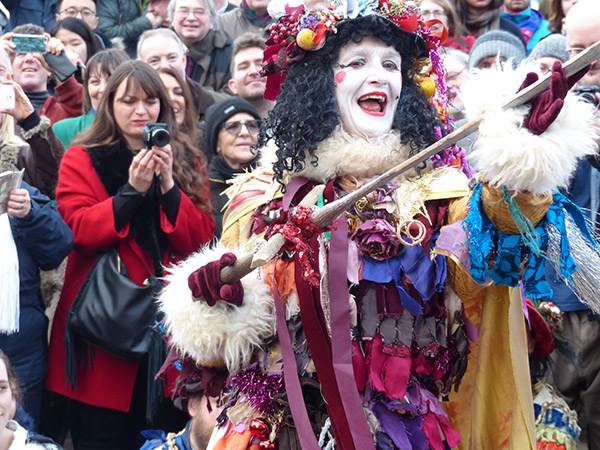
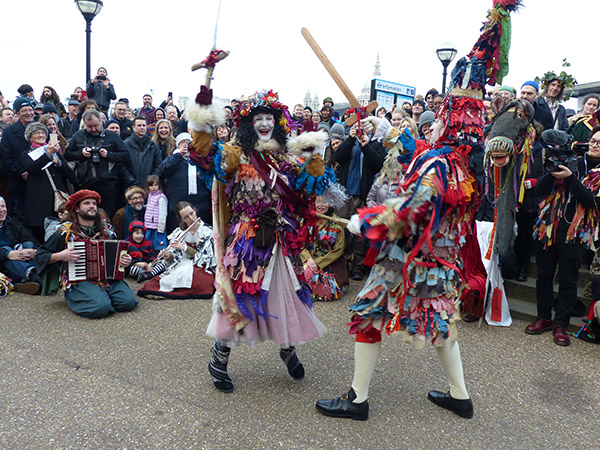

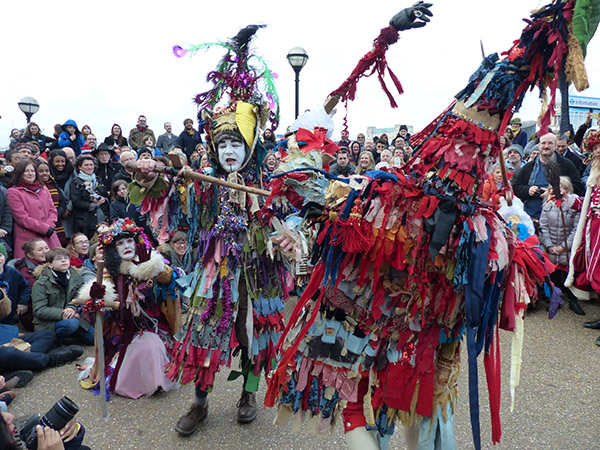


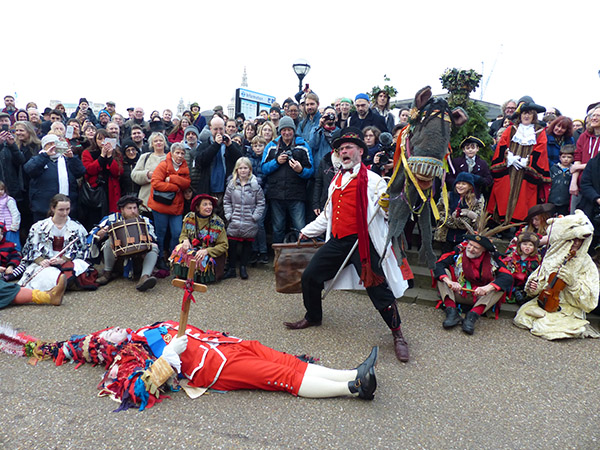
After the doctor brought King George back to life, the singing and dancing continued, and Twelfth Night cakes were handed out. Traditionally, these are fruit cakes, but the cakes passed out were modern day sponge cakes. A pea or bean could be found in any of the cakes, and this would make the finder the Queen or King of the day.

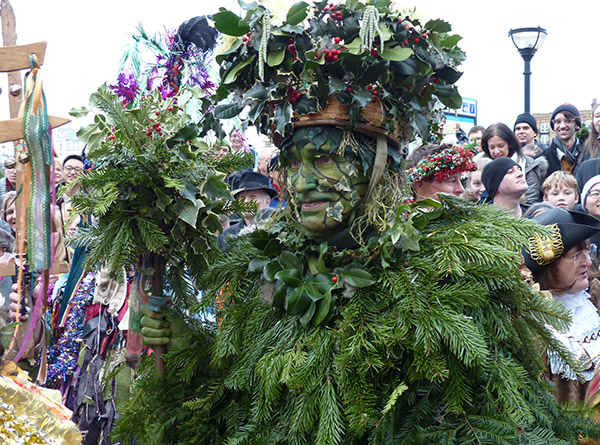
A little girl found the pea, and she became the queen and had a straw crown and had to also carry a parsnip. An older man found the bean and was crowned, and he had to carry a cabbage and sprouts.
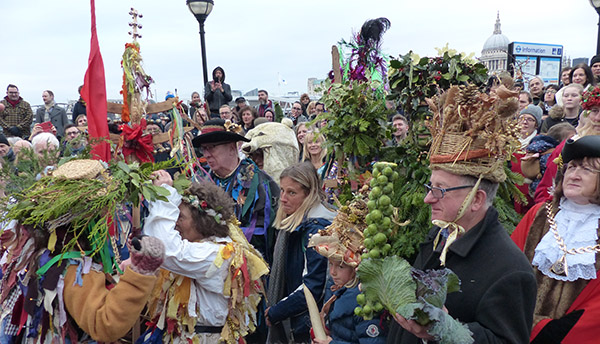
This was then the beginning of the group wassail through the streets from The Globe theatre, through Borough Market, and to the George Inn pub.
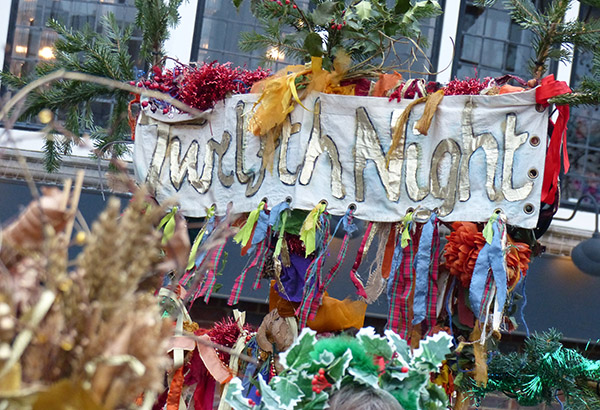
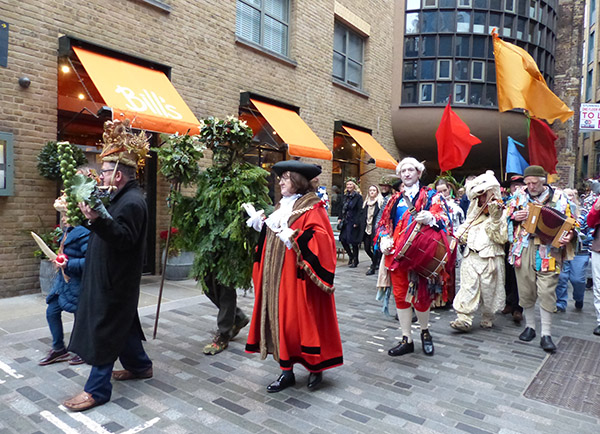
The George Inn is a listed building owned by the National Trust and dates from the medieval ages. This is the only surviving galleried coaching innm and it was frequented by Charles Dickens. This part of London had many inns, and one of those was the Tabard, where Chaucer started to write "The Canterbury Tales"; it was demolished in the late 1800s. The George was rebuilt after a fire in Southwark in 1677. These types of inns with galleries were used for Elizabethan theatre productions, called inn-yard theatre. So, this was a perfect place for the continuation of the Twelfth Night celebrations.

The events continued with the "George Inn Wassail" to celebrate the old building, its patrons and drinking. And several people started to drink and enjoy the festivities.
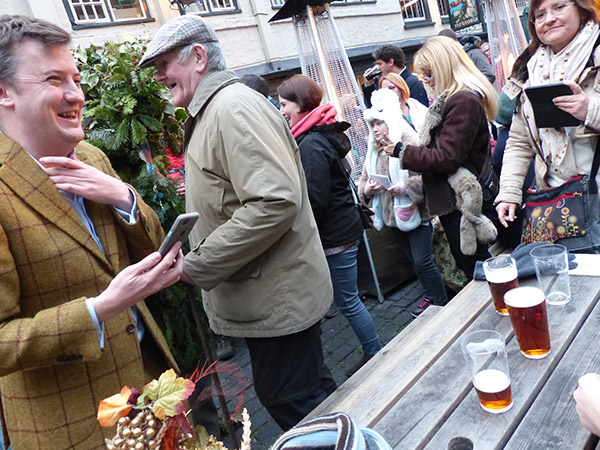
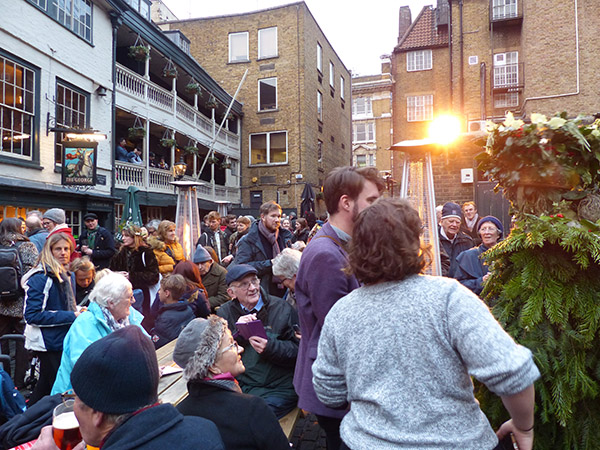
The George Inn also had a wishing tree. A wishing tree is a tree that has spiritual value, and people place offerings on the tree in the hope that the wish is granted. One type of wishing tree is a tree trunk that has coins hammered into it. Some timbers in pubs have a beam for coins to be hammered into them as offerings too. In addition to hammering coins in, pieces of cloth can also be tied to trees as offerings. This tree had ribbons tied to it.
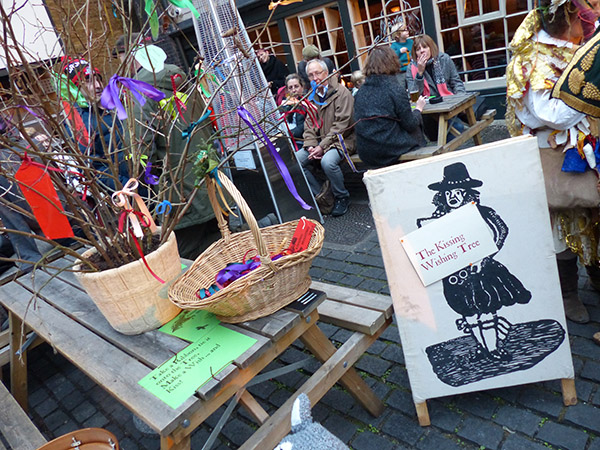
Morris dancers also started to dance at one end of the inn's yard, and the other end of the yard also had traditional dancing, though I am not sure if it was Morris dancing or not.
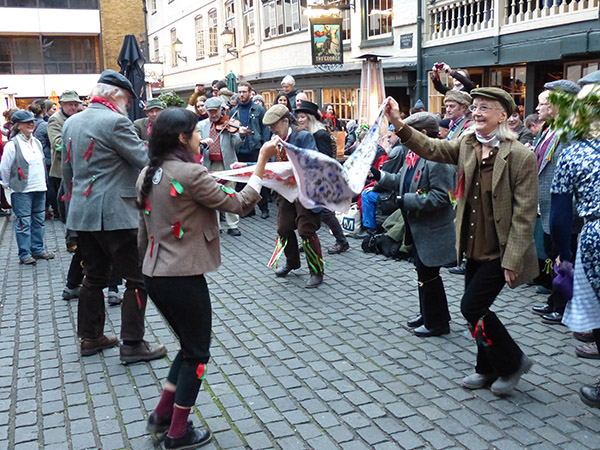
And, this concludes with the Twelfth Night celebrations. I did not stay at the George Inn for too long because I had had a long day and I went to the celebrations by myself so wasn't really in the mood for hanging around by myself. I did not event attempt to get a drink as I thought that the pub would be busy. However, I enjoyed this event and learning about the traditional aspects of Twelfth Night and celebrating the day or understanding how to celebrate the day as it had been celebrated in the past. I think that it would be very nice if we continued to celebrate this day as in a lot of places, the event and festivities end after Christmas Day. Imagine if we had a few more days to have parties. Spreading it out may make it less stressful.
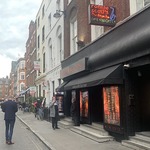
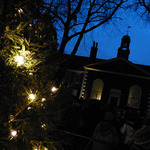
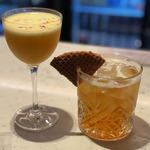
Leave a comment